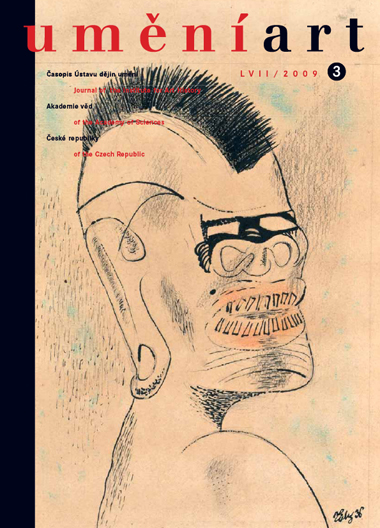Milan Togner
Italské kresby z alba Marat Icones
Marat Icones, probably a drawing artist's taccuino, from the chateau library in Kroměříž, was acquired by the Olomouc Premonstratensian and painter Dionýsius Strauss while he was residing in Rome (1691-1692). The texts in the volume, their translations, and their analyses are the subject of attention another study by Jana Zapletalová in this issue of Umění. Alongside the texts, the album also contains 77 prints, copperplate engravings, and line etchings, 17 of which are prints that are directly connected to Maratti's work. The prints were created by 78 artists, each of whom contributed to the completion of the prints to varying degrees, and they range in time from the period of the late fifteenth to the first two decades of the sixteenth century, and most of them originated in Rome. In the case of 18 of the drawings their Italian provenience is, I believe, apparent, even in those cases where only fragments have survived, re-used as mounting material. The oldest drawings are the ones composed into an oval shape, and they are unquestionably the work of one artist. They contain a sufficient number of formal features for them to bear a resemblance to the works of Carlo Maratti. However, his drawing work, examples of which are found in perhaps every important collection of Italian drawings, has thus far only been analysed rather unsystematically, and this fact makes it impossible to confirm the authorship. In the case of the second important author of drawings in the volume, Giovanni Battista Gaulli, known as Baciccio, the situation is somewhat simpler. There is evidence of a connection to drawings linked with his name, and today there are enough relatively detailed analyses of comparable material for this connection to be verified. It is because it is possible to make a wide comparison with authenticated drawings by Gaulli that in this case he can be ruled out as the author, perhaps with the exception of the characteristic primi pensieri, but even here the question of authorship is relativised by the loose, very sketchy manner of drawing. The vast majority of these drawings emerged in Gaulli's immediate vicinity, perhaps in the circle of his workshop, and Gaulli's work had an exceptionally strong influence on the author.
Full-text in the Digital Library of the Czech Academy of Sciences:
https://kramerius.lib.cas.cz/uuid/uuid:2183a30b-4283-3de0-6c90-c87f41bf9ac1
< back

